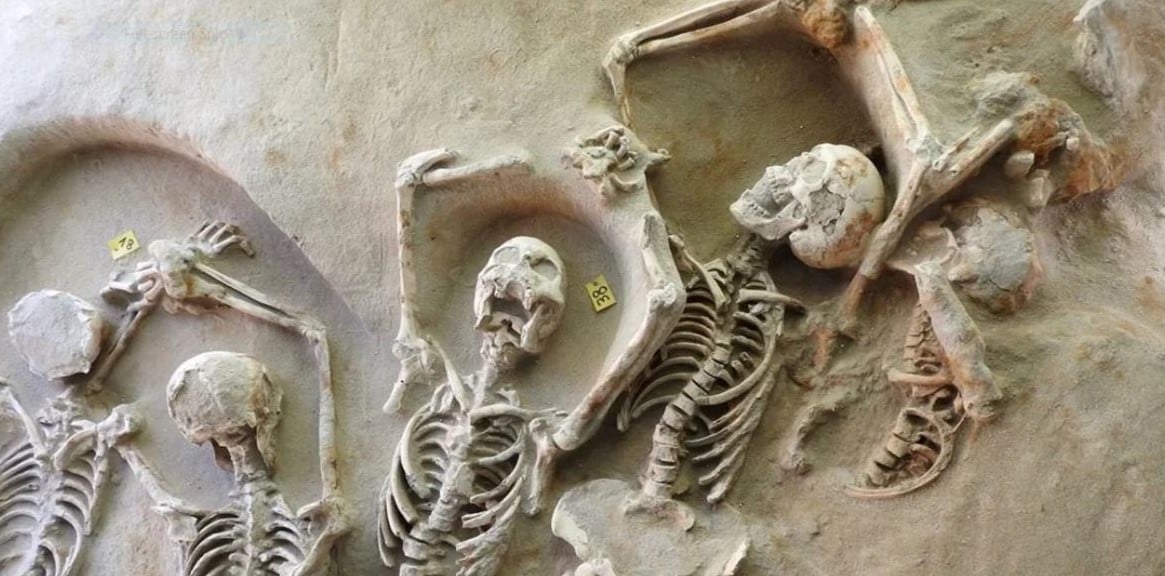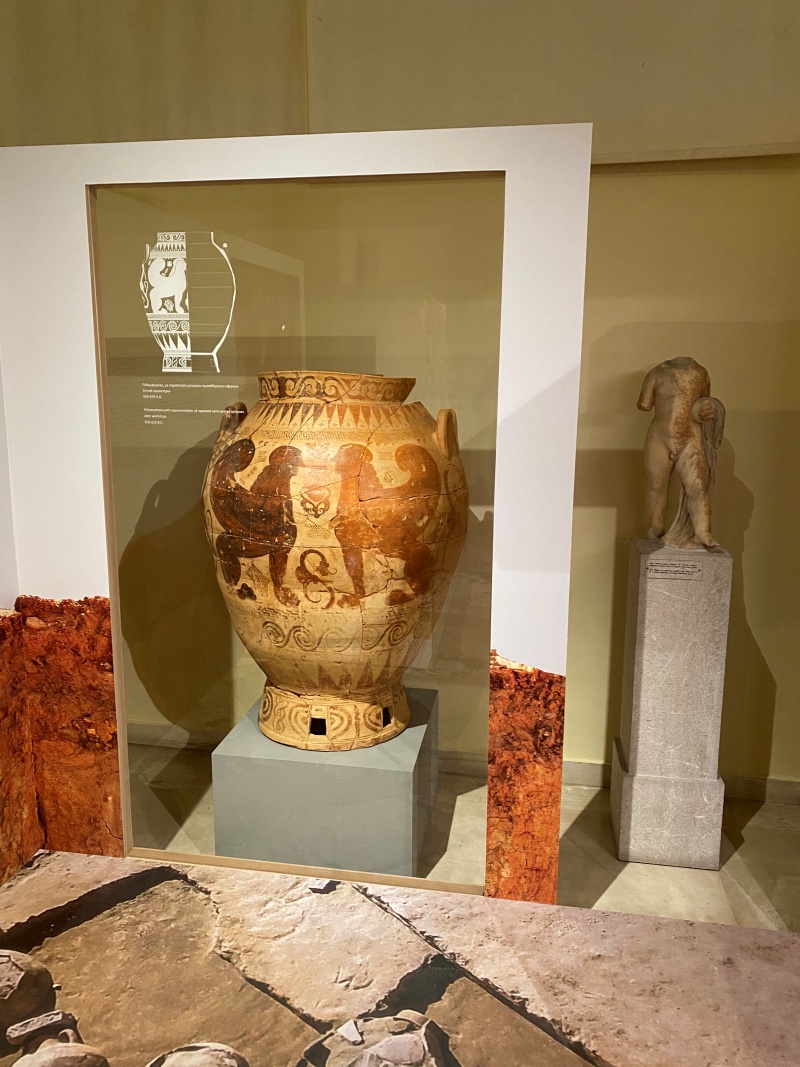
An exhibit showcasing some of the most important findings from the excavation of an ancient Greek cemetery in Faliron south of Athens opened at the Archaeological Museum of Piraeus this weekend.
The salvage excavation on the site where the Stavros Niarchos Foundation Cultural Center (SNFCC) was to be built, which ran between 2012 and 2016, revealed an extensive cemetery of 1,500 ancient Greek skeletons dating between the 8th and 5th centuries BC.
It also revealed an extraordinary mass grave of eighty skeletons, thirty-six of which were in shackles.
With wrists still bound by iron shackles, the skeletons were found in the Delta Faliron necropolis during the construction of SNFCC. The grisly find was actually a rare and extraordinary one, which was hailed as one of the ten most important archaeological discoveries of 2016 by the respected US periodical Archaeology.

According to archaeologists, the men, also referred to as “desmotes,” had been victims of a mass execution at some point between the eighth and fifth centuries BC, but who the men were, how they got there, and why they appear to have been buried with a measure of respect remains a mystery.
The cemetery was used for a lengthy period of time spanning almost three centuries from the late 8th to the early 5th century BC. Its size, density, and long period of use favorably point to its characterization as one of the most significant necropolis in Attica during the Archaic Period.
Almost six hundred of the burials that have been found are dug into the soft sandy soil (pit graves), and 358 are pot burials, i.e. of infants and young children in vases. Of these, eighty-eight are funeral pyres.
Also found were eleven larnakes, nine cist graves (box-shaped), and fifteen animal burials.
One of the major findings was a wooden box, used as a coffin for the burial of a young person. The coffin, made of a single piece of wood, had been carved into a tree trunk and was found in excellent condition.
Ceramic artifacts uncovered at the Ancient Greek Cemetery at Faliron
Most objects serving as grave goods were ceramic with only a few exceptions. Therefore, pottery played the most significant role regardless of the age of the deceased.

All known styles are represented (Late Geometric, Protoattic, Black-figure), with products of Attic workshops dominating. The predominance of Corinth with regard to imports is also confirmed here.
Furthermore, the presence of a significant number of vases and pots imported from eastern Greece and Euboea suggest a more developed commercial network in Attica and is not circumstantial.
“Falirothen (Coming from Faliron): Between Two Worlds” was inaugurated by Culture Minister Lina Mendoni on Friday in the presence of Piraeus Mayor Yiannis Moralis.
It will run to December 31st and is part of events for the European Days of Cultural Heritage.
It is presented in four units with the first two explaining funerary practices in Attica during the Early and Late Archaic Periods. The third one focuses on Early Attic pottery, and the fourth one presents three burials analyzed through bioarcheology, presenting the identity of the dead and parts of their life histories.
See all the latest news from Greece and the world at Greekreporter.com. Contact our newsroom to report an update or send your story, photos and videos. Follow GR on Google News and subscribe here to our daily email!



